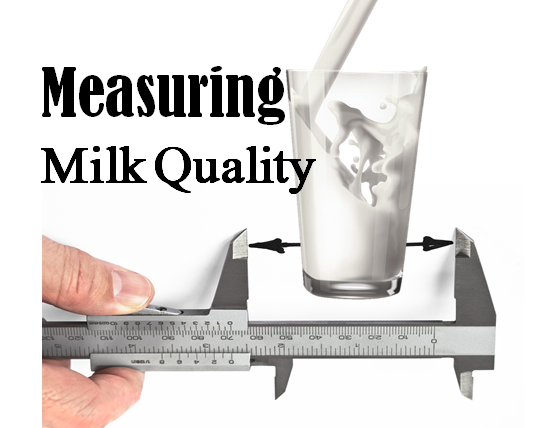
SCC is a Method of Measurement, How dairy farmers measure milk quality
“To Measure Is To Know”
To measure is to know. If you’re like me, you have probably heard this saying before. Some famous person said it long ago (there is even debate as to who said it). However the saying still rings true, which is probably why this quip is still widely known today.
Long ago (early twentieth century), dairy farmers needed a way to measure milk quality. Dairy farmers could not improve the quality of care for their cows if they didn’t have an effective measurement to determine positive and negative changes for improving milk quality.
Counting the number of cells in milk became the standard method of measuring milk quality and was called somatic cell count, SCC.
Somatic is defined as being related to the body. Somatic cell count can be translated to literally mean “bodily cell count” or the number of cells in milk.
According to one source:
“Although cell counts and leukocyte (white blood cell) counts in milk have been used for over a century in mastitis research, Prescott and Breed (1910) suggested the use of the term “body” cells because research at that time had suggested that the cells in milk were detached epithelial cells. By the late 1960’s the term “somatic” (meaning body) cell count became commonplace.” (source)
SCC is a Milk Quality Indicator
Basically somatic cell count, SCC, indicates milk quality. The SCC shows the amount of white blood cells that are present in milk. A higher presence of white blood cells means the cow is sending more cells to her udder to guard or fight off invading microorganisms.
A more technical description:
“The cellular presence in milk is one of the important protective mechanisms of the mammary gland and may be considered to have a surveillance function in the uninfected gland. Macrophages and PMN are phagocytic cells which engulf and kill bacteria. The lymphocytes include both B-cells and T-cells that play key roles in specific immune reactions that may follow the initial response to infection. An inflammatory response (mastitis) is initiated when bacteria enter the mammary gland through the teat canal and multiply in the milk (Bramley et al., 1996). Bacteria or their components may have a direct effect on the function of the mammary epithelium but also interact with the cells in milk” (source)
So when you boil it all down the somatic cell count is a measurement of the cow’s immune system. The lower the SCC, the fewer white blood cells in milk mean the cows are less stressed and have less invading microorganisms.
Some other reasons for high SCC:
- Age – Older cows tend to have more cells present in their milk, while younger have less
- Stage of lactation – Cows producing less milk and are later in their lactation have less cells present
- Stress – A cow that is more stressed will show higher SCC
- Season – SCC levels usually are lowest in a clean, dry, comfortable environment. Wet or humid weather will elevate cell counts. Generally SCC is higher in the winter
- Udder injury – an injury, cut, etc. would temporarily elevate the number of cells until the cow heals.
- Indirect causes – poor milking procedures, or poor udder hygiene are examples of indirect factors that can contribute to higher SCC
Somatic Cell Counts do not always indicate that a cow is suffering an infection, but they are indicators that she could be coming down with something. SCC is like checking your cholesterol. It is an indicator of milk quality and udder health.
There is some seasonality to SCC, 2014 DHI report (Source)
SCC variation among different areas of the U.S. according to DHI 2014 (Source)
What is a Normal SCC
Since lower is better, you might think that having a measurement of 0 somatic cells would mean the milk is perfect quality, but that’s not really the case.
If you have a cow producing milk with 0 somatic cells, your cow may not be from this planet. Your cow may not actually be alive because cells are a normal part of biological systems. 0 somatic cells would mean your cow is not replicating new cells. It is normal for cows to generate cells, and have white blood cells present in milk.
So what would be considered a normal level SCC. According to the National Mastitis Council (a global milk quality association), cows producing milk with 200,000 cells/ml is considered normal:
The cell count for “normal” milk is nearly always less than 200,000 cells/ml (lower for first younger cows). Higher counts are considered abnormal and indicate probable infection. Higher counts are also associated with decreased production. (Source)
The government also regulates SCC and defines the legal limits for SCC. According to the California Department of food and agriculture, CDFA, the Federal legal SCC is 750,000 cells/ml while the California legal standard is stricter at 600,000 cells/ ml (source)
How are Dairy Farmers doing?
Interestingly dairy farmers have done a good job keeping cows clean, reducing stress, and reducing cow’s exposure to microorganisms. SCC has been going down each year.
Dairy farmers have created Dairy Herd Improvement Associations, DHIA, to monitor and test milk quality on the farms. Dairy farmers are managing their cows better than ever before.
Milk quality is improving on farms every year (DHI Reports 2000-2014)
Don’t let SCC gross you out
Don’t be grossed out that white blood cells are in milk. Remember SCC is just a measurement tool used by dairy farmers to indicate milk quality and udder health. The goal of the dairyman is to reduce the cow’s exposure to stress and bacteria. SCC shows him how he is doing.
White blood cells are in all animal products. Meat has white blood cells in it because there’s blood, and white blood cells are in blood. You don’t know about it because it’s not measured in meat. There are other methods to measure quality. It’s nothing to be grossed out about.
Further Questions
That’s probably more information than you ever wanted to know, but let me know if you think of something else
Cheers
I did a post about ways we keep our milk clean and high quality
Some people think SCC means that there is pus in milk, that couldn’t be further from the truth. Read more in my post

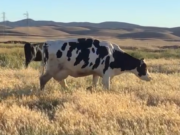


















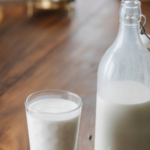
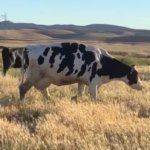
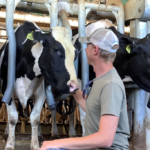

Who has a higher account cow or heffier
Generally, heifers have higher SCC counts but it depends on various factors – age, location, weather, etc.
please i need your news letters